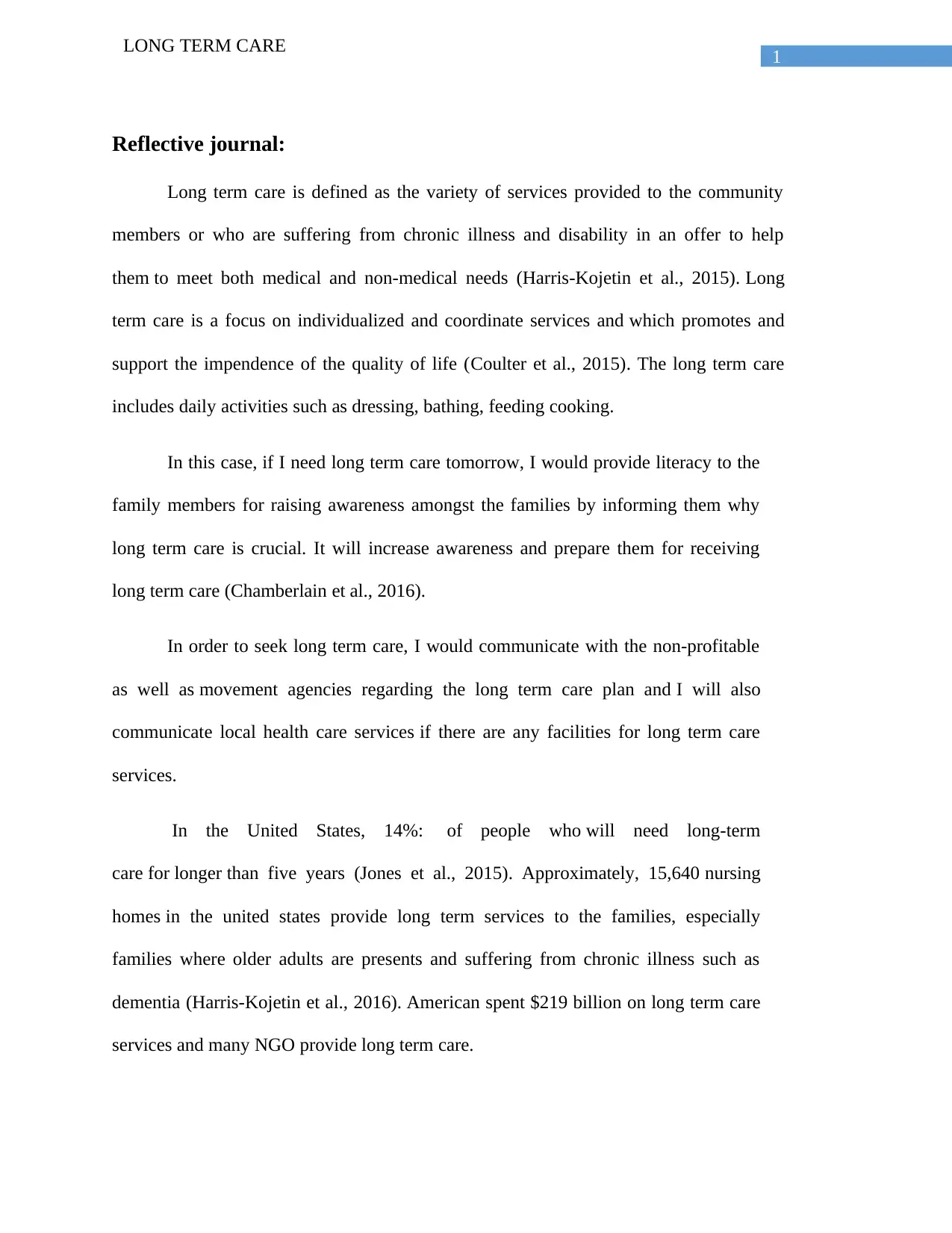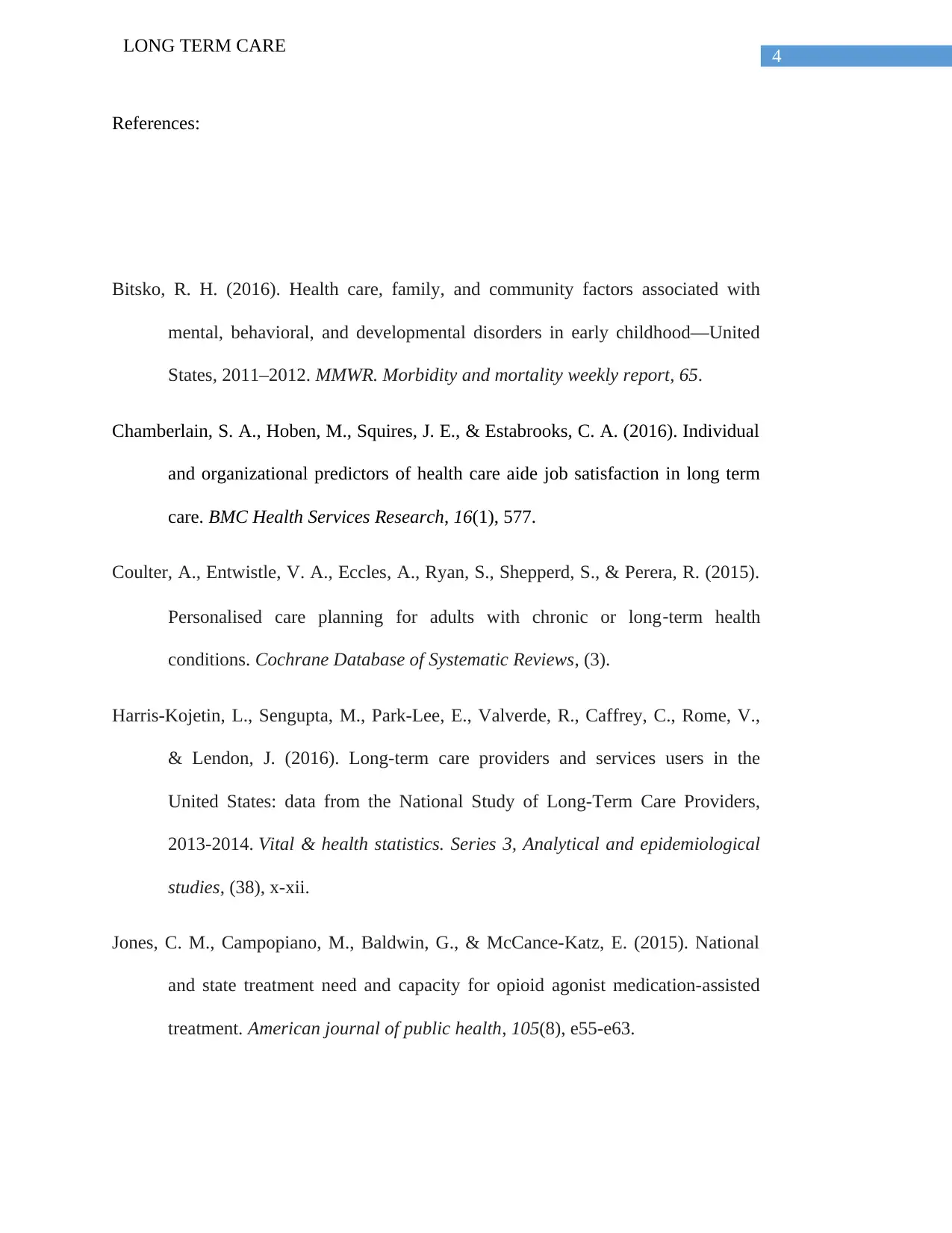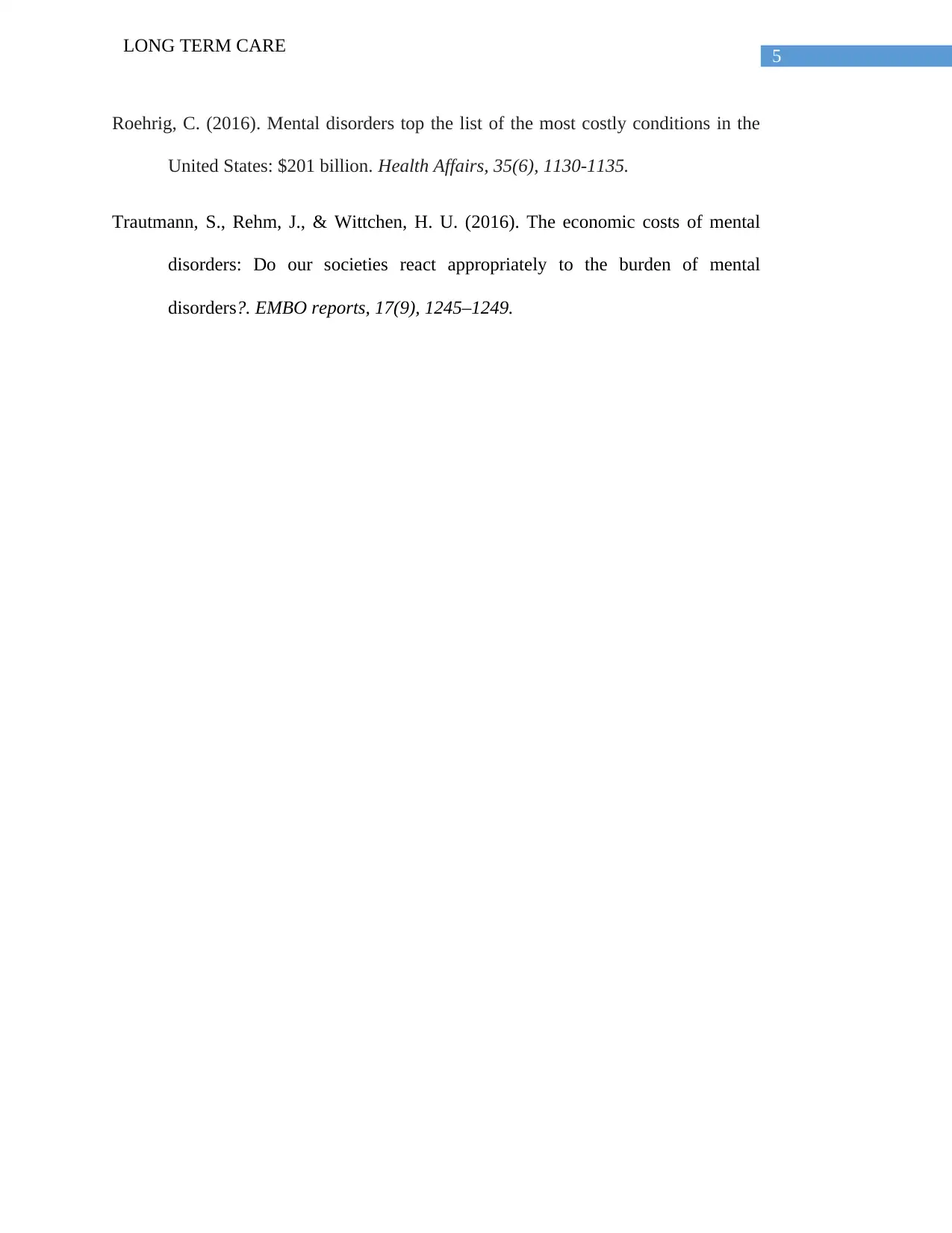Long Term Care: Reflective Journal on Personal Planning
VerifiedAdded on 2022/10/19
|6
|981
|12
Journal and Reflective Writing
AI Summary
This reflective journal explores the concept of long-term care, defining it as a range of services for individuals with chronic illnesses or disabilities to meet both medical and non-medical needs. The author contemplates their personal long-term care plan, emphasizing the importance of family awareness and communication with healthcare services. The journal discusses the prevalence of long-term care in the United States, including the financial aspects and the role of various organizations. It also highlights the need for lifestyle modifications, such as improved nutrition and the elimination of harmful habits, to prepare for future long-term care needs. Furthermore, the journal addresses mental health, identifying common symptoms of mental illness and discussing the increasing healthcare expenditure associated with these conditions. The author references various studies and statistics to support their insights into the complexities of long-term care and mental health.
1 out of 6












![[object Object]](/_next/static/media/star-bottom.7253800d.svg)